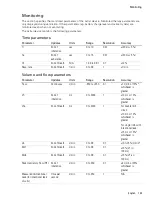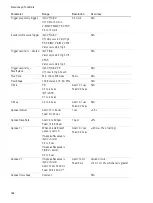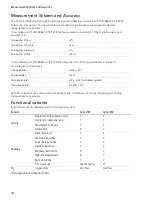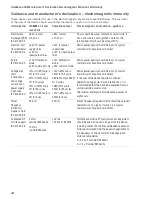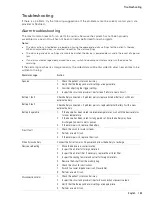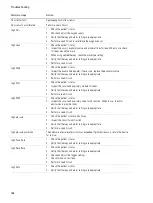
Guidance and Manufacturer’s Declaration Electromagnetic Emissions & Immunity
152
Recommended separation distances between portable and mobile RF
communications equipment and the life support device
These devices are intended for use in an environment in which radiated RF disturbances are controlled.
The customer or the user of the device can help prevent electromagnetic interference by maintaining a
minimum distance between portable and mobile RF communications equipment (transmitters) and the
device as recommended below, according to the maximum output power of the communications
equipment.
Rated maximum
output power of
transmitter (W)
Separation distance according to frequency of transmitter (m)
150 kHz to 80 MHz
Outside ISM bands
d = 0.35 √P
150 kHz to 80 MHz
Inside ISM bands
d = 1.2 √P
80 MHz to 800 MHz
d = 1.2 √P
800MHz to 2.5 GHz
d = 2.3 √P
0.01
0.1
0.1
0.1
0.2
0.1
0.1
0.4
0.4
0.7
1
0.4
1.2
1.2
2.3
10
1.1
3.8
3.8
7.3
100
3.5
12.0
12.0
23.0
For transmitters rated at a maximum output power not listed above, the recommended separation
distance d in metres (m) can be determined using the equation applicable to the frequency of the
transmitter, where P is the maximum output power rating of the transmitter in watts (W) according to
the transmitter manufacturer.
Notes:
•
At 80 MHz and 800 MHz, the separation distance for the higher frequency range applies.
•
These guidelines may not apply in all situations. Electromagnetic propagation is affected by absorption and
reflection from structures, objects and people.
Potential impact of electromagnetic disturbances
The loss or degradation of the following clinical functions due to electromagnetic disturbances could
result in compromised patient safety:
•
Accuracy of ventilation control
•
Accuracy of monitoring of airway pressure, expired volume and FiO
2
•
Therapy alarms.
Detection of this degradation could be observed by the following device behaviour:
•
Erratic ventilation delivery
•
Rapid fluctuations in monitored parameters
•
False activation of therapy or technical alarms (eg, System Fault or Battery comms lost alarms)
Summary of Contents for Astral 100
Page 1: ...Clinical guide English ...






